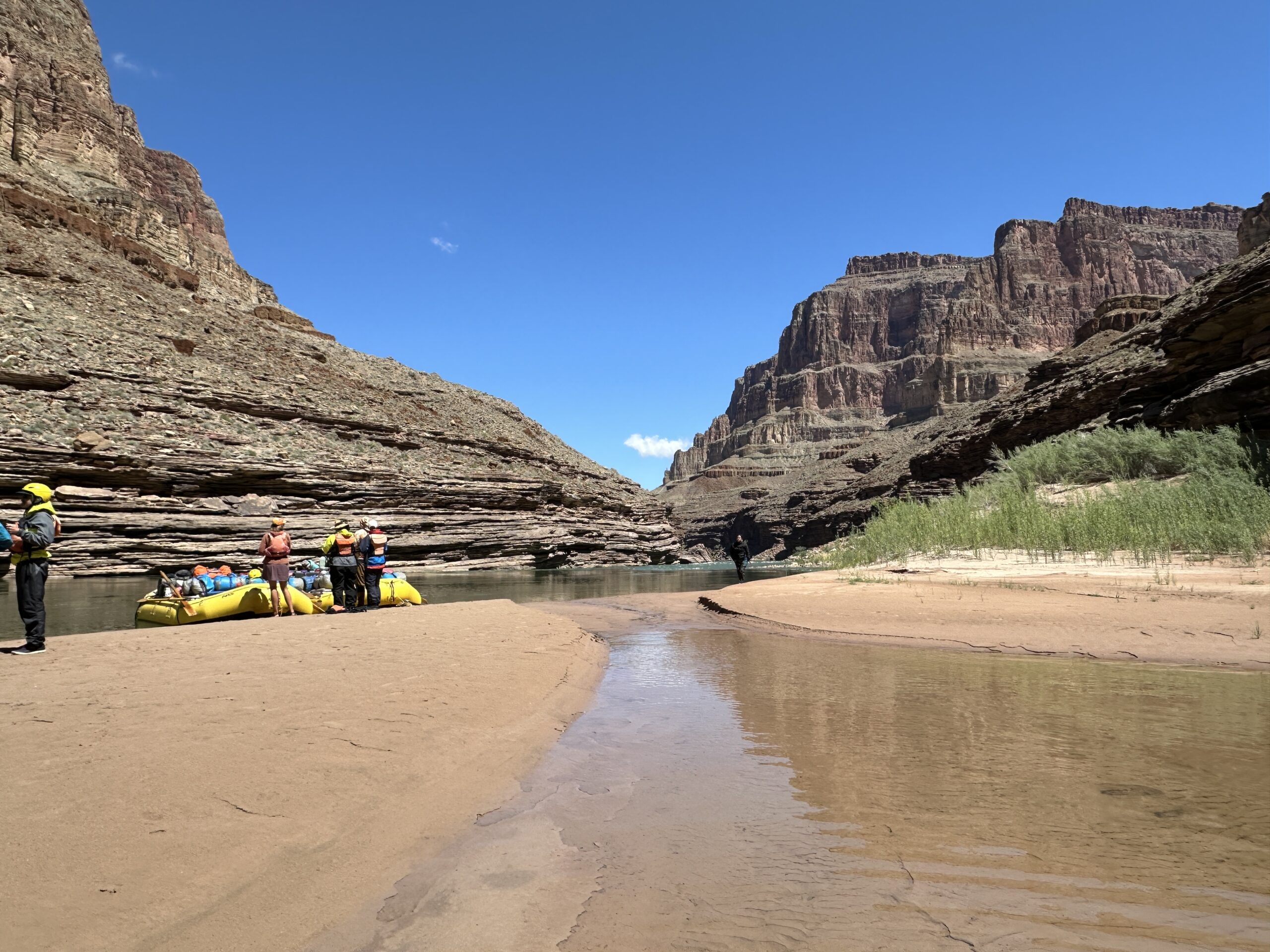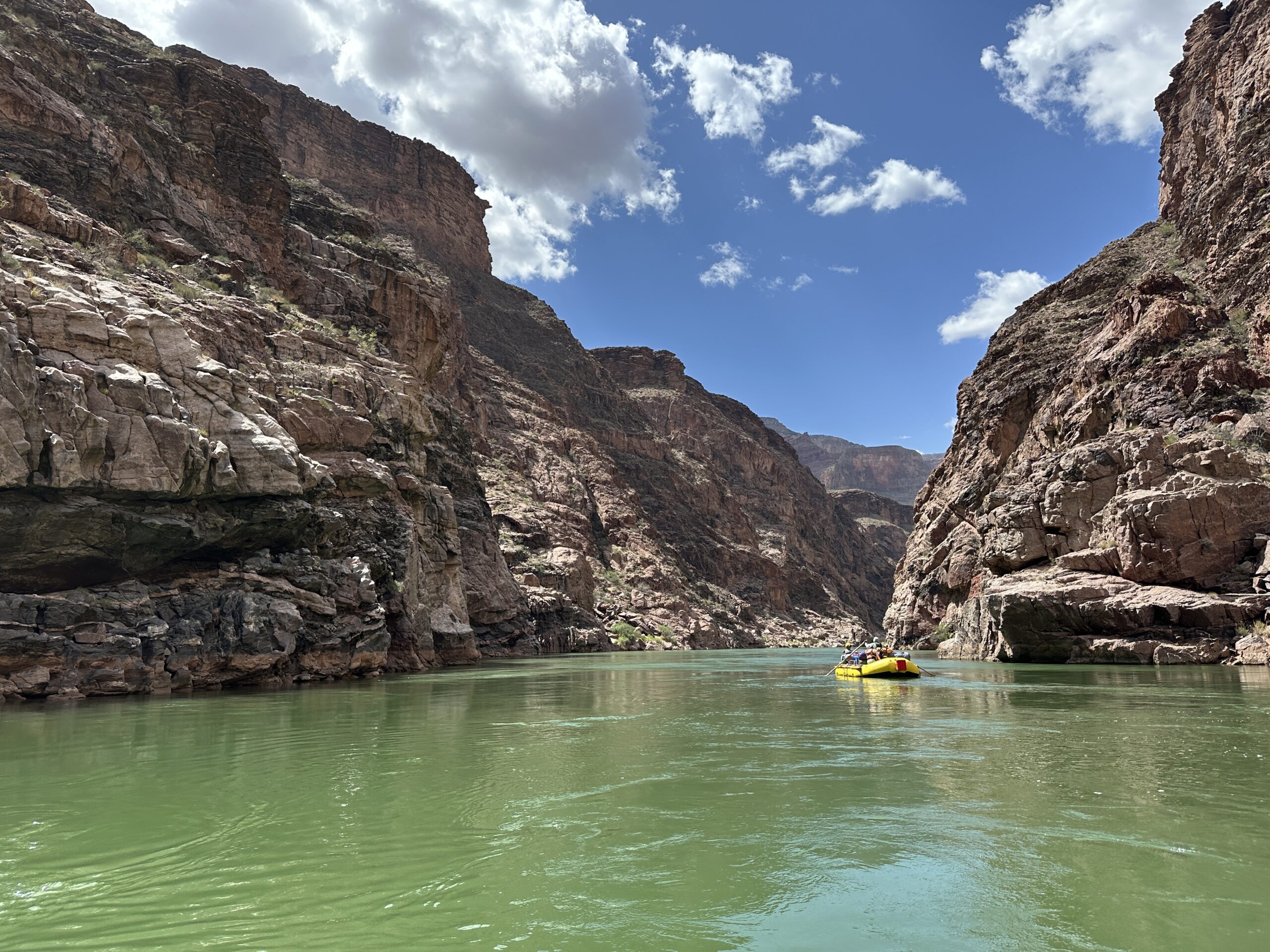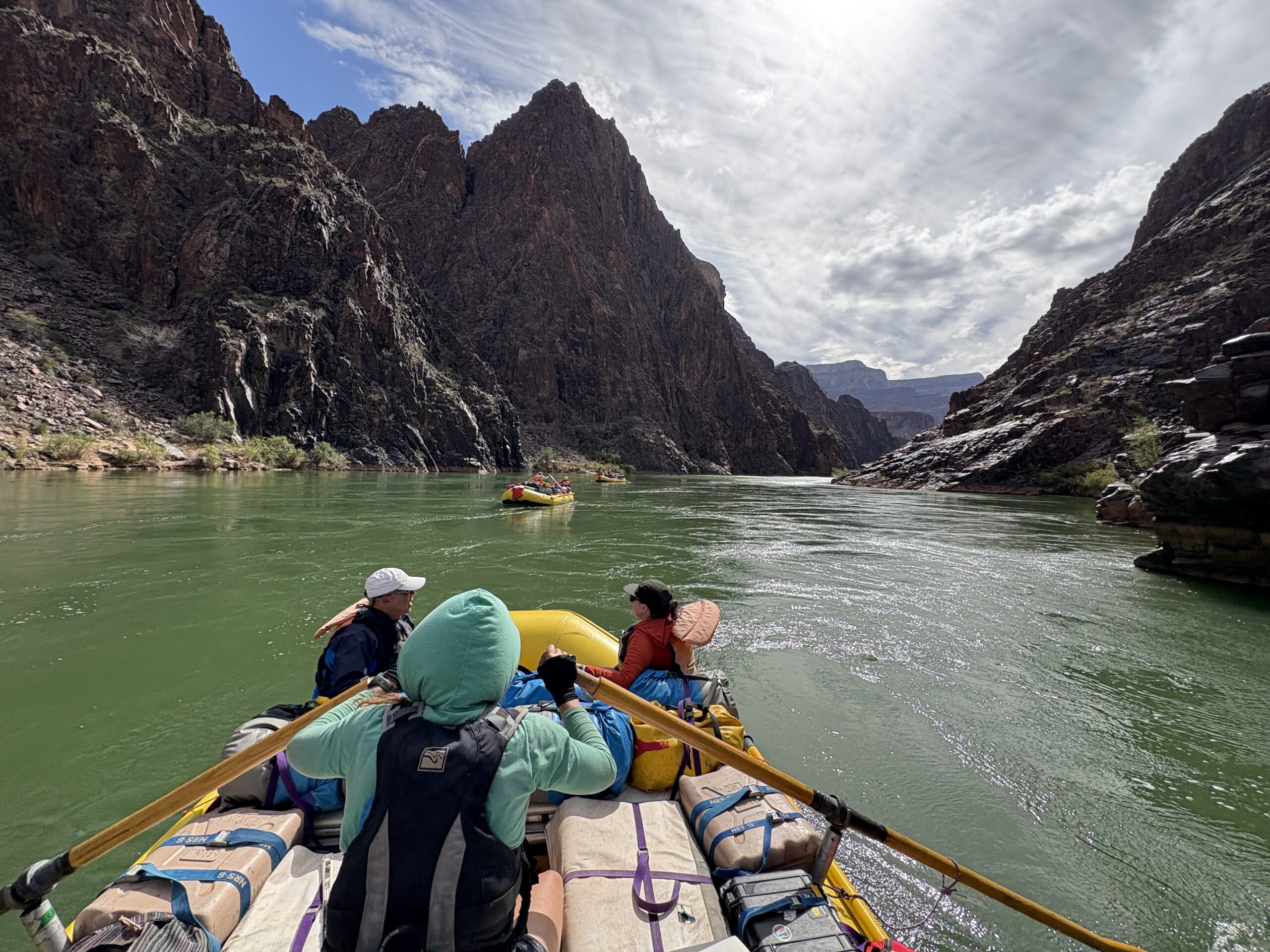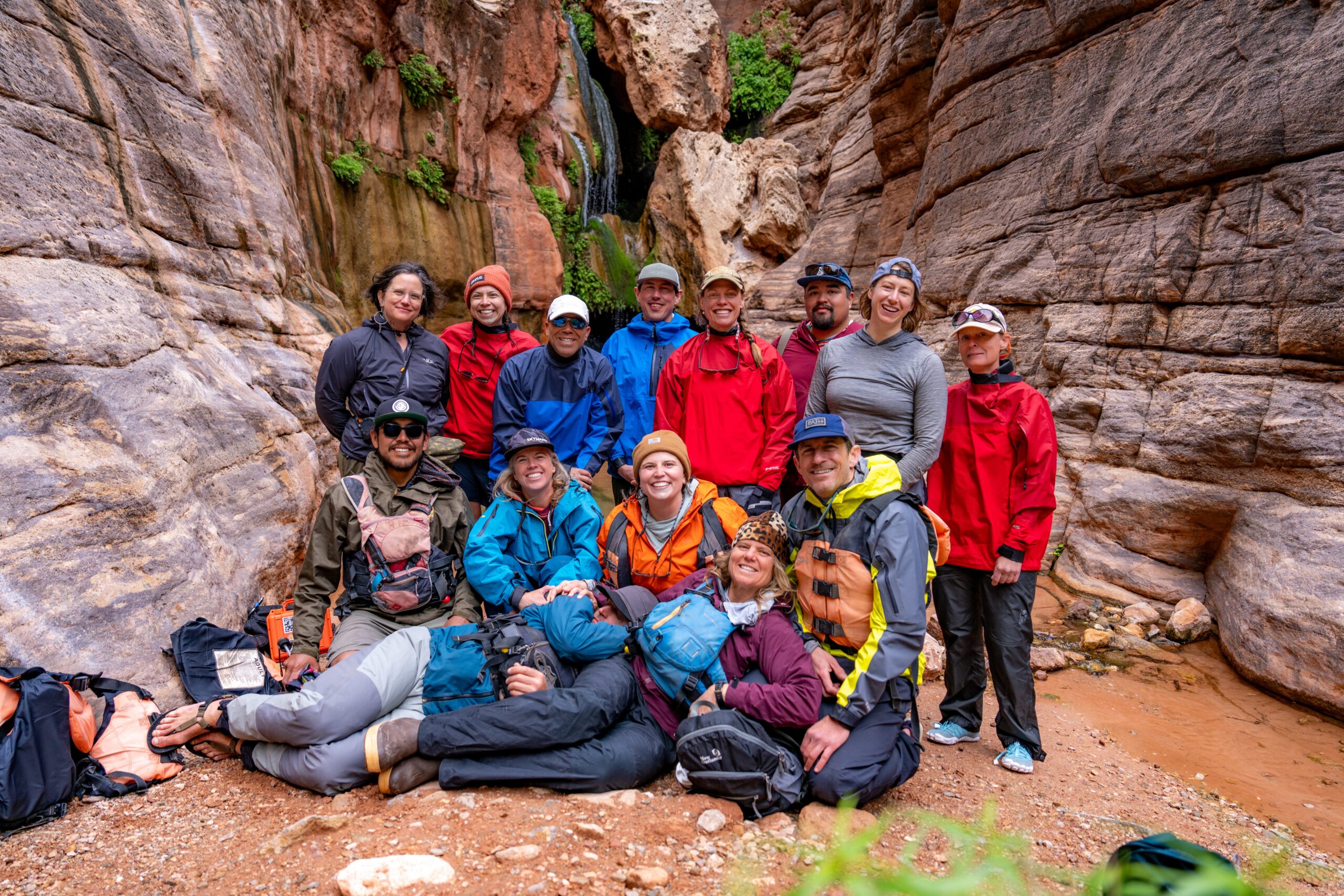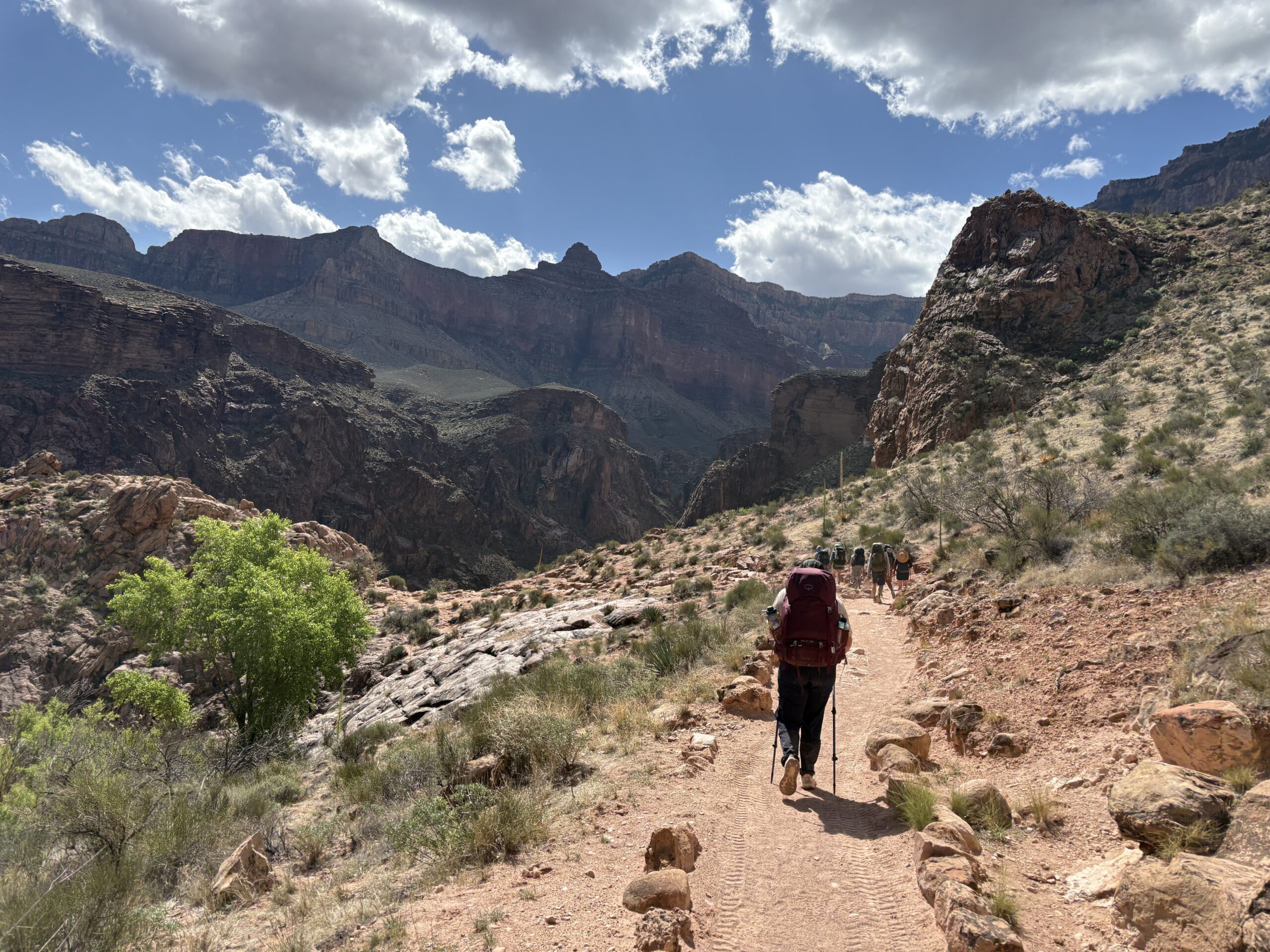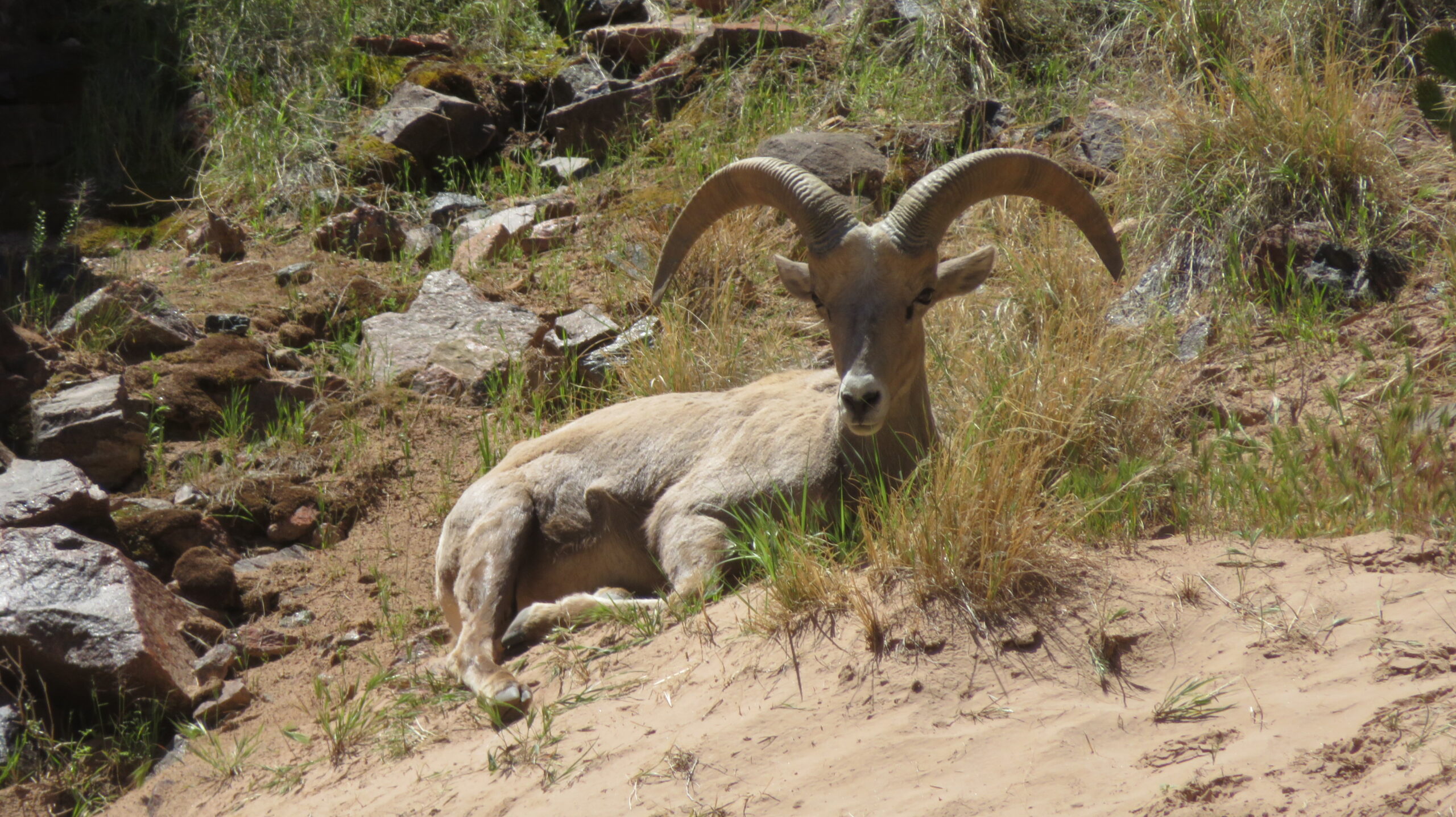Perspectives on Sustainability, Quarterly Newsletter
By: Sarah Rodgers, Outdoor Learning Spaces Coordinator
“Lean left!” the raft guide bellows through the wind and mist as I hold on as tightly as I can, endeavoring to lean, but not so far as to fall out. The yellow rubber boat smashes through waves and rapids in the river where I am spending ten days, and I’m feeling out of my element on the water with 18 new faces and little knowledge of the canyon.
We stop on a large sandy beach for the night and settle in for our first class session. Our facilitator opens our class by offering some framing so we might feel more connected to the place we are learning in and about. Part of this framing is that, in some ways, the river is controlled like an irrigation ditch. Murmurs are heard throughout the group, some “Wows,” others just nodding. This small framing shift is shocking to me at first. How could this wild place be like an irrigation ditch? But as I settle into the idea and my new environment, I start to make connections between the work I do many miles away at the Campus Garden and my journey through the Grand Canyon.
The Wild & Mighty Colorado
Since 1909, the wild and mighty Colorado River has been viewed as a resource that the United States government could use for energy, expanding cities, and irrigation in a dry valley. Today, there are 15 dams on the mainstem of the Colorado, with two on either side of the Grand Canyon (Glen Canyon Dam and Hoover Dam), turning its rapids into energy, drinking water, and irrigation water.
Most irrigation ditches are just large enough for a dog to plop into and a farmer to jump across, but this one averages several hundred feet across in some sections. It can be as deep as 90 feet and is supposed to flow to the Sea of Cortez (Gulf of California) in Mexico. Often, the river dries up before it gets there.

Because of the canyon’s vast beauty and the seemingly wild and scenic river, it is easy to overlook that this is also a river in crisis. With less snowfall in the Rockies – resulting in less spring runoff – less and less water is filling reservoirs, meaning less water flows downstream each season. And the crisis will continue as the Southwestern US gets warmer and drier. And yet, it continues to serve a utilitarian function. We often think of ecosystem services as mostly utilitarian, but they are also non-material – aesthetic, spiritual, and emotional.
In the Field with Freeflow
I am about a mile below the rim of the Grand Canyon, participating in a ten-day field course through the Freeflow Institute. I am joining other educators, writers, filmmakers, and activists on this immersive outdoor experience all about policy, science, and humor on the Colorado Plateau. Each day, our expert guides lead us through time as our facilitators guide us through new levels of place-based learning.
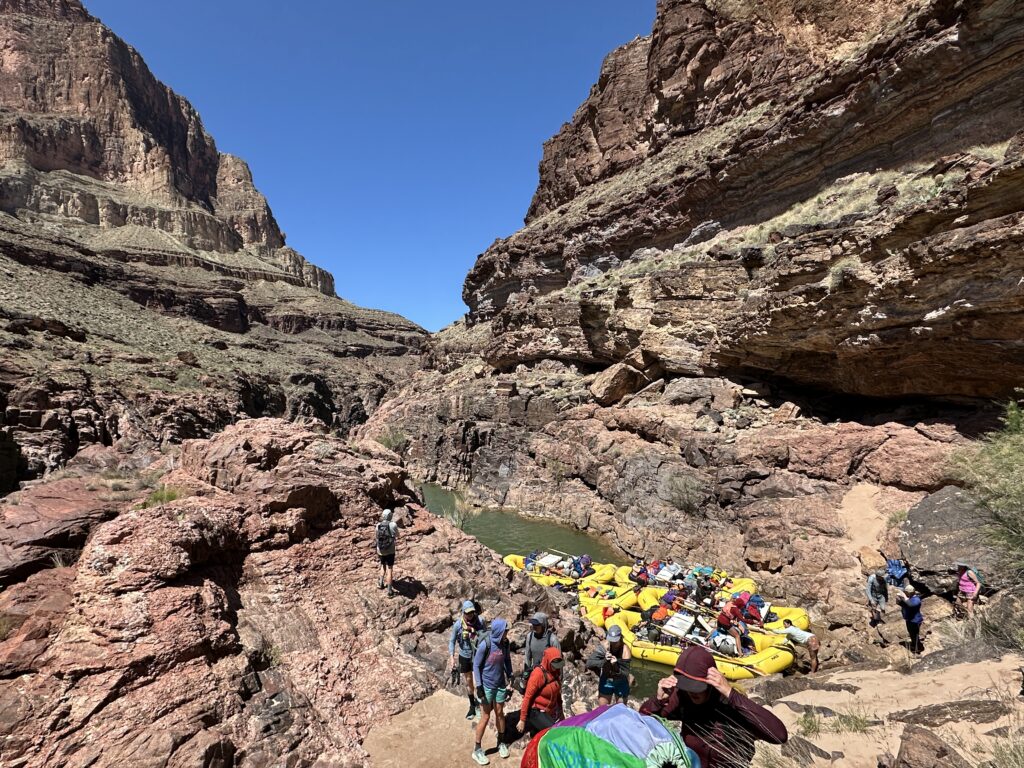
Each day, we dive deeper, learning about the place that we are inhabiting for our trip. In addition to the in-depth discussions we have each day about the complexities of the Colorado Plateau, we also write and share our words with each other –and hopefully with others– when we finish our journey.
Floating down the unnaturally emerald-colored river, I think about the farms, power plants, and people who depend on it each time they turn on a tap, spigot, or switch. I think more about the people who don’t have water running out of their faucets, who don’t have running water at all, and those who have been connected to the river for time immemorial, but are not included in important decisions about the cold water that now soaks me from head to toe.
Drip not Ditch
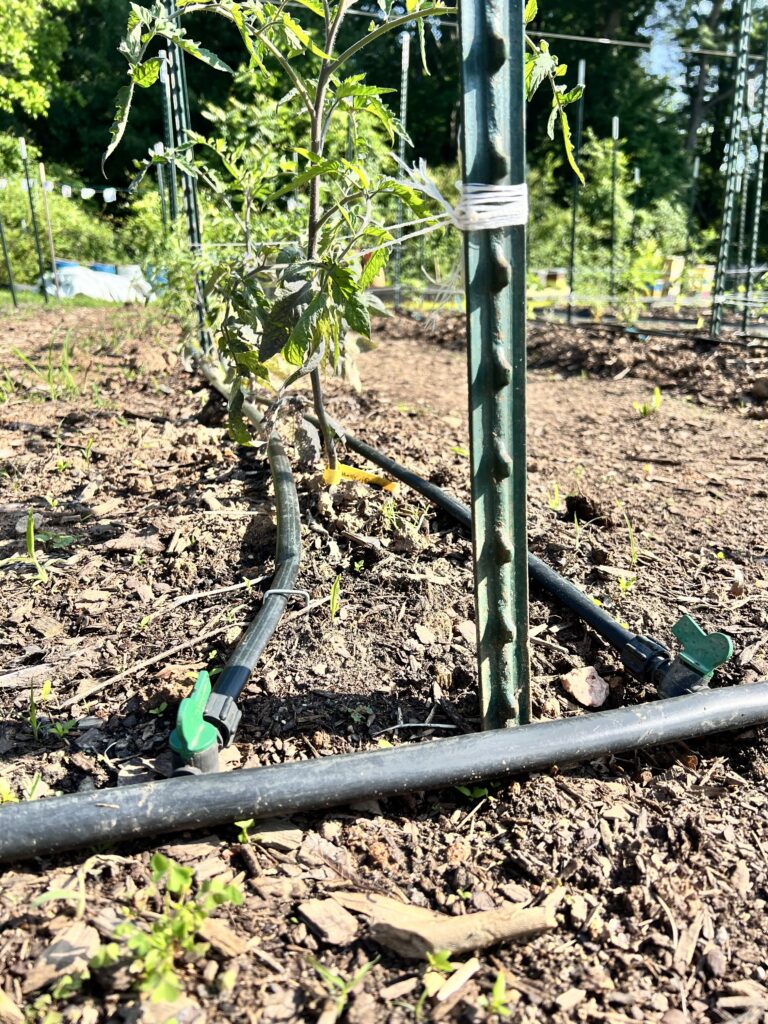
Over 2,000 miles from the Grand Canyon, weeks before my trip down the Bright Angel Trail to the river, I am laying out drip lines and setting up timers. In the Campus Garden that I manage here at Wake Forest University, it’s time to prepare for spring. When it comes to water in the garden, my biggest concern throughout the summer is when to put my system on a rain delay because of another summer storm.
In North Carolina, climate change impacts will be a lot different from the effects the Southwest will feel. Here, we are likely to face a hotter and wetter future with more extreme weather, like we saw in the western part of our state with Hurricane Helene this fall
At first thought, it can seem that the issues facing these regions have nothing to do with one another. But what can we learn about one from the other? How can we learn how to know one place well and transfer that knowledge to other complex spaces and problems?
Oh, the Places You’ll Know
In the Office of Sustainability, we answer these questions by facilitating engaged learning opportunities focused on climate solutions. On campus, we demonstrate ways to reduce food waste, nourishment with plant-forward meals, stormwater management designs, regenerative agriculture, and district heating and cooling, just to name a few of the top global climate solutions in practice at Wake Forest.
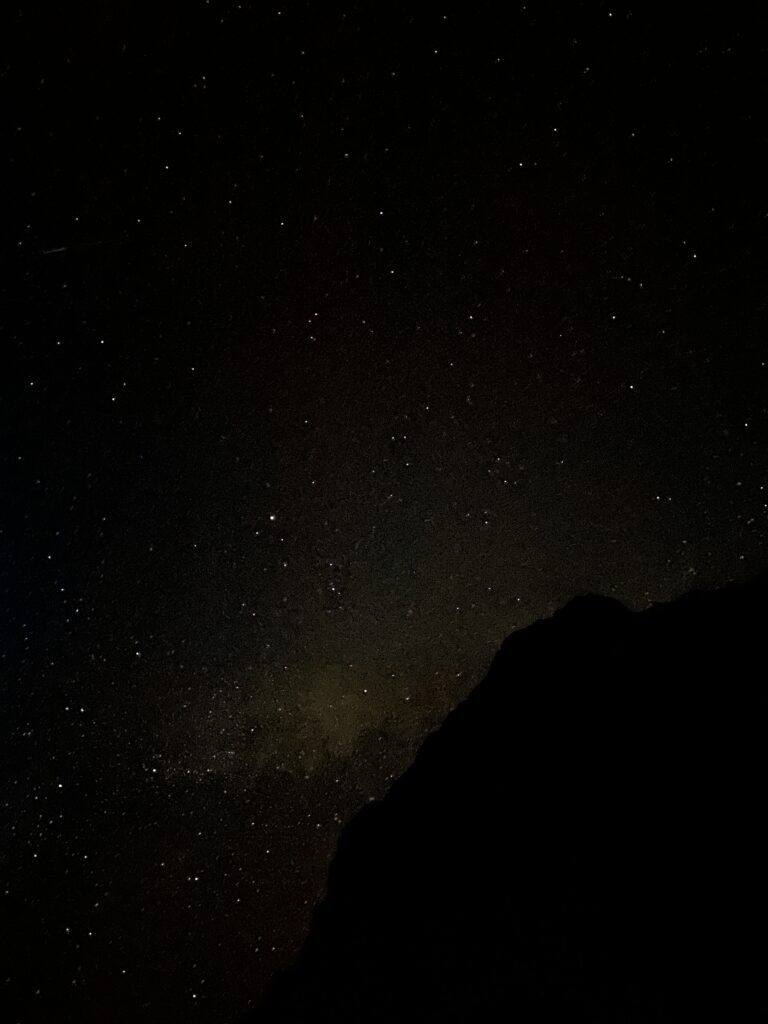
Through our sustainability learning spaces, students can learn about our campus and region, and apply that knowledge wherever they go, whether during a study abroad experience in the Himalayan Mountains or their careers after graduation.
While in the canyon, I could practice what we teach by engaging with the environment around me to ask thoughtful questions, participate in discussions, and make connections between the issues facing North Carolina and those affecting the Colorado River.
At first, the issues facing the Southwestern and Southeastern regions of the U.S. feel worlds apart, but there are similarities between the challenges and future solutions. Both regions are dealing with extremes, one with too much rainfall and one with not enough. The future for both areas will need to include adaptation and out-of-the-box solutions.
As we get to know a place, or many places, we gain the tools to start discussing– and eventually answering – the most complex problems facing our natural spaces.

